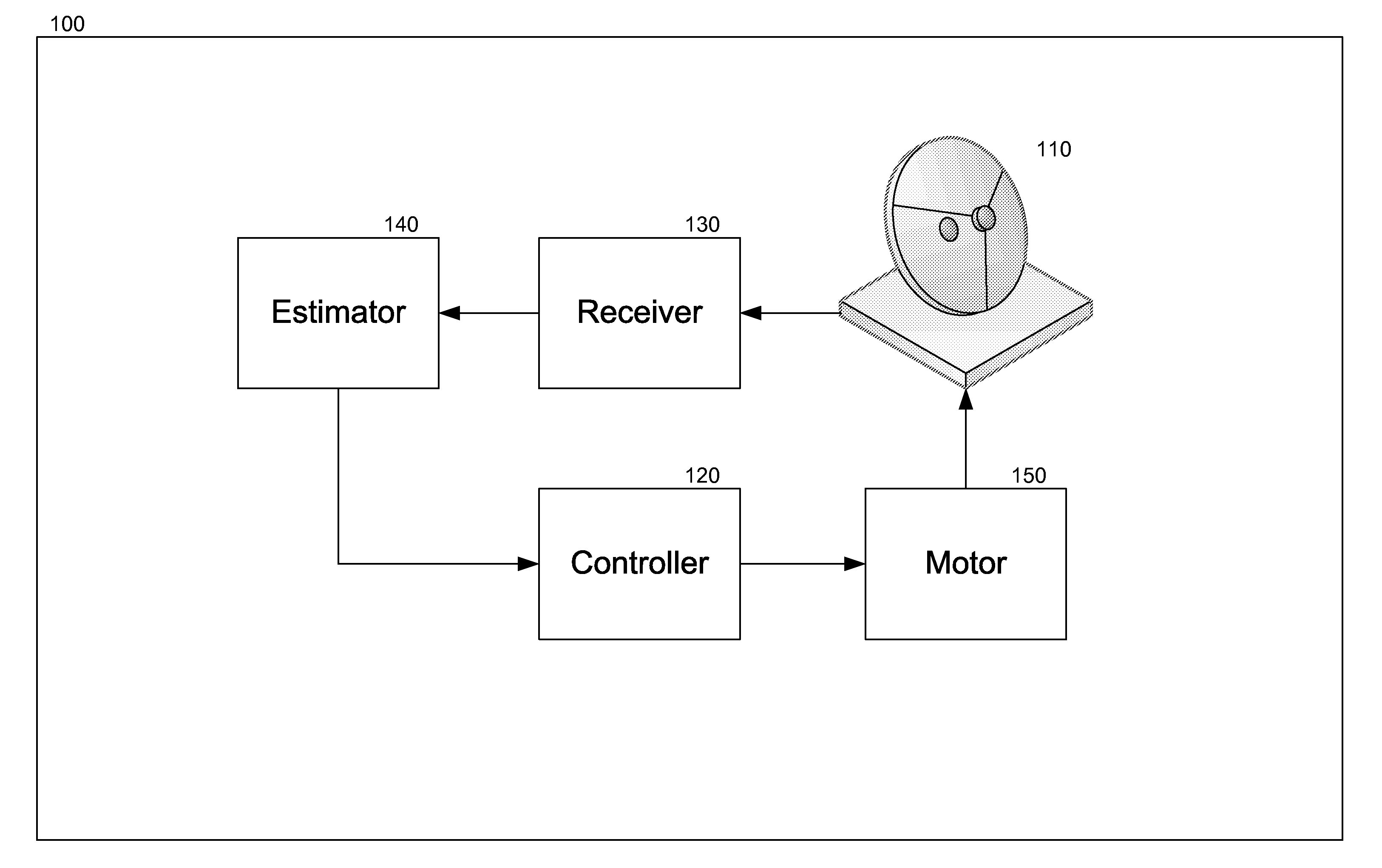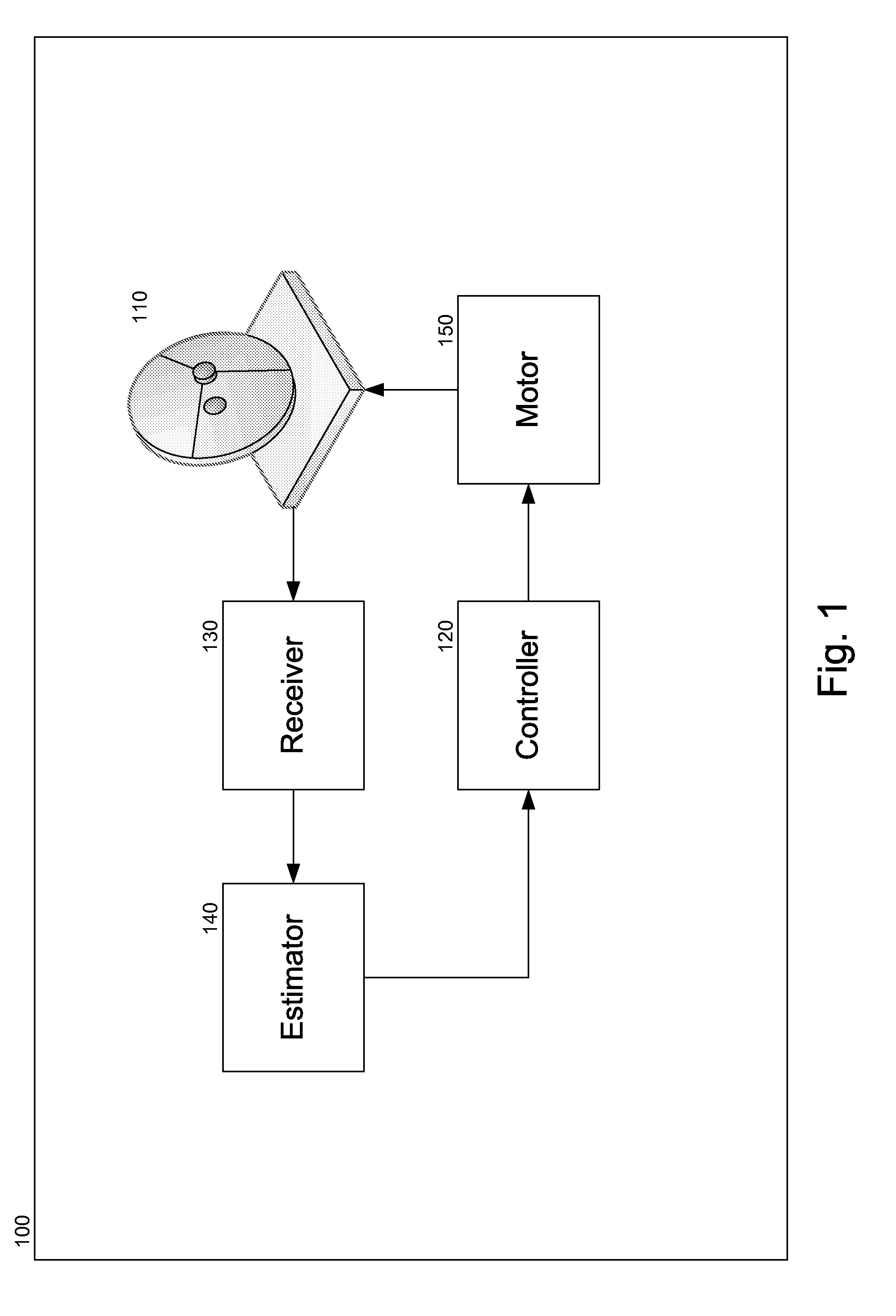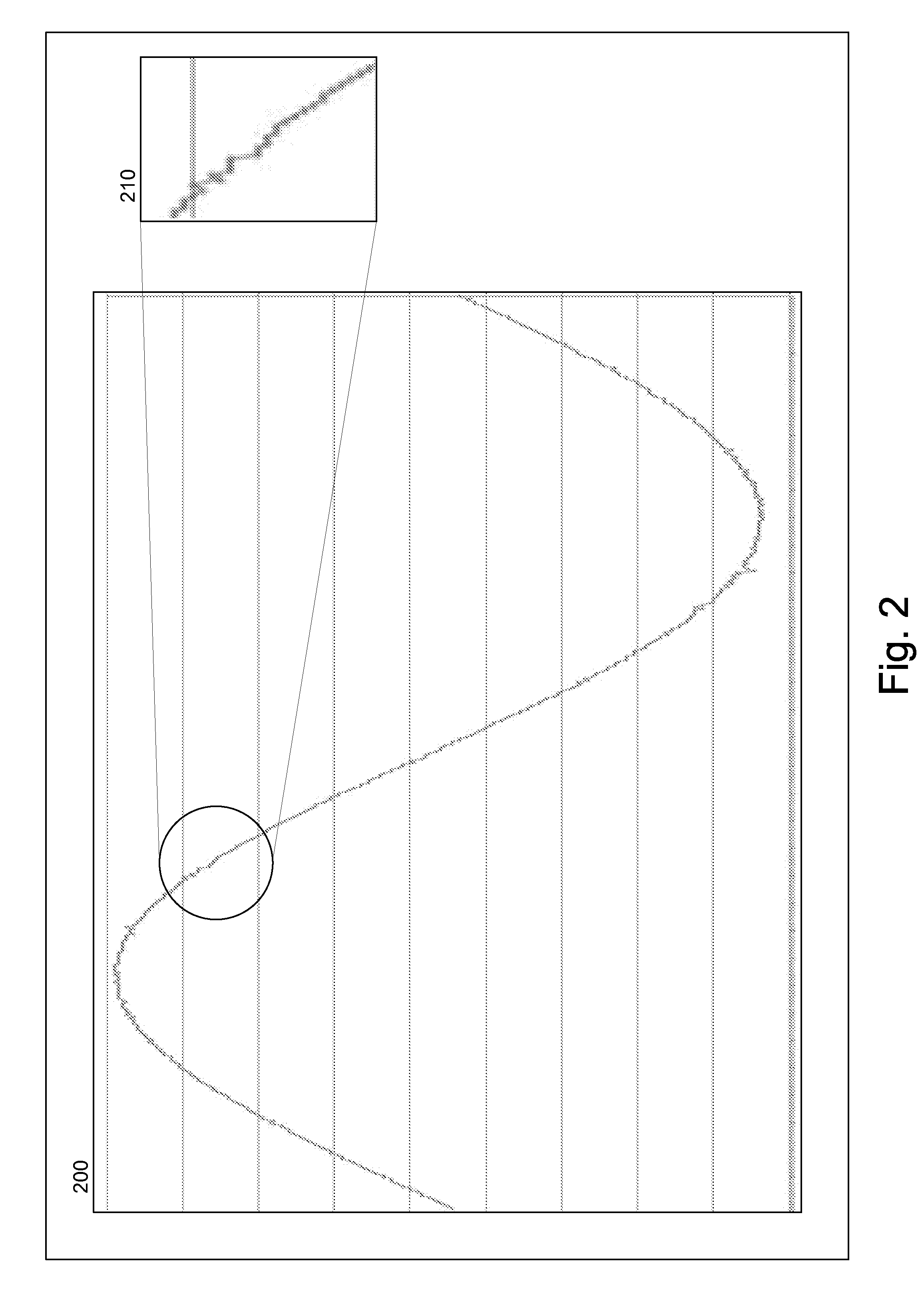Satellite Tracking Method and Apparatus Thereof
a satellite and satellite technology, applied in the field of satellite communication systems, can solve the problems of reducing the frequency of course corrections of satellite operators, reducing the cost of building and launching new geostationary satellites, and not being stationary at all, so as to minimize the effect of signal reception level degradation, improving peaking process, and minimizing the effect of ground station performan
- Summary
- Abstract
- Description
- Claims
- Application Information
AI Technical Summary
Benefits of technology
Problems solved by technology
Method used
Image
Examples
Embodiment Construction
[0023]Referring to FIG. 1, a satellite communication ground station 100 may be configured for communicating over an inclined orbit geostationary satellite. Ground station 100 may include a tracking antenna 110 configured to have three (3) fixed axis (azimuth, mount elevation and polar) and one moving axis. Motion around the forth axis (inclination axis) may be controlled by a motor 150, wherein the motor operation may be further controlled by a controller 120. Ground station 100 may further include a receiver 130, which may be configured to at least receive a signal arriving from the satellite via tracking antenna 110, and an estimator 140, which may be configured to at least estimate reception quality of a signal received by receiver 130 and provide the estimation to controller 120.
[0024]When all three fixed axis of tracking antenna 110 are properly aligned, the center of the antenna beam may be pointed at the satellite's nominal position on the orbital arc, i.e. at the point where...
PUM
 Login to View More
Login to View More Abstract
Description
Claims
Application Information
 Login to View More
Login to View More - R&D
- Intellectual Property
- Life Sciences
- Materials
- Tech Scout
- Unparalleled Data Quality
- Higher Quality Content
- 60% Fewer Hallucinations
Browse by: Latest US Patents, China's latest patents, Technical Efficacy Thesaurus, Application Domain, Technology Topic, Popular Technical Reports.
© 2025 PatSnap. All rights reserved.Legal|Privacy policy|Modern Slavery Act Transparency Statement|Sitemap|About US| Contact US: help@patsnap.com



